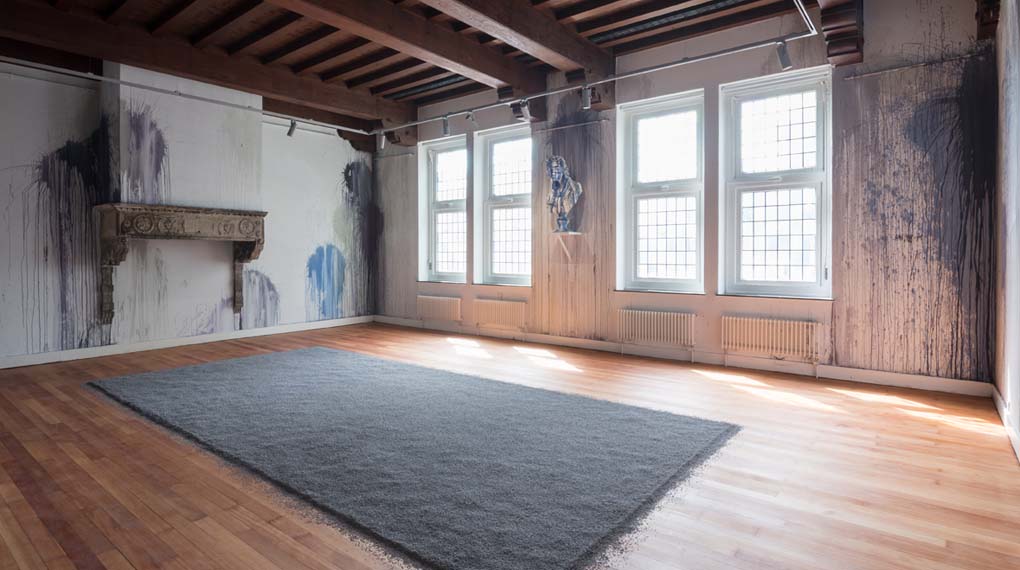[English below]
Zoals de wetenschap er is om ons te helpen greep te krijgen op de werkelijkheid door ondubbelzinnige verklaringen te zoeken zo toont de kunst ons juist de tweeslachtigheid van ons bestaan. Kunst en wetenschap beogen hetzelfde maar kiezen diametraal verschillende wegen. In het beleidsplan van Rijksmuseum Twenthe hebben we de functie van kunst als volgt omschreven:
Kunst kan ons helpen bij de verbeelding van ons verleden, heden en toekomst. Kunst kan helpen om door conventies heen te breken, of juist te bevestigen. Daardoor kan kunst een unieke rol in de maatschappij vervullen, niet gehinderd door kaders of beperkingen. Want kunst is niet aan regels gebonden. Kunst is niet goed of slecht. Kunst is ongrijpbaar. Kunst kan elke dag iets anders zijn en elke dag iets anders teweeg brengen. Kunst is het smeermiddel, de verbazingsolie. Rijksmuseum Twenthe wil kunst een podium geven om de wereld te verbazen, te verwonderen en tot nieuwe inzichten te laten komen.

Ars Longa, vita brevis. Tentoonstellingszaal ingericht door Anne Wenzel, 2018 – Macht en onmacht.
Het meest radicaal komt deze visie tot uiting in de collectiepresentatie die Rijksmuseum Twenthe in juni 2018 opende: Ars Longa, vita brevis – de kunst duurt lang, het leven is kort. Voor ‘Ars longa’ hebben we negen kunstenaars gevraagd om ieder een eigen kabinet samen te stellen rondom het thema ‘la condition humaine’, ofwel de menselijke conditie in zijn tweeslachtigheid. In de tentoonstelling zijn ensceneringen te zien van achtereenvolgens Bart Hess (1984), L.A. Raeven (1971), Berend Strik (1960), Philip Vermeulen (1986), Anne Wenzel (1972), Peter Zegveld (1951), Karin Arink (1967), Armando (1929) en Silvia B. (1963). Hun kabinetten volgen de verschillende fasen uit een mensenleven, beginnend met de begeerte in de eerste zaal en eindigend met het ‘memento mori’ in de laatste.
De uitgangspunten voor de kabinetten waren het eigen werk van de kunstenaars en de veelzijdige collectie van Rijksmuseum Twenthe. Het resultaat bestaat uit negen zeer uiteenlopende zalen waarin alle kunstenaars op verrassende wijze hun eigen werk combineren met objecten uit de museumcollectie.

Ars Longa, vita brevis. Tentoonstellingszaal ingericht door Peter Zegveld, 2018 – Wilskracht en onvermogen.
Voor het boek dat bij deze experimentele collectiepresentatie verscheen schreef ik een essay dat afsloot met de volgende woorden:
Het is de kennis die wij hebben over de geschiedenis en onze immer gebrekkige menselijke conditie die [eeuwenoude] kunst in een nieuwe en voor onze tijd relevante context plaatst. En dat is precies wat wij met de collectiepresentatie Ars longa, vita brevis beogen. Kunst is een van de krachtigste manieren waarop mensen vorm en betekenis geven aan onze meest primaire ervaringen. Kunst is er om de menselijke conditie tastbaar en invoelbaar te maken, te verbeelden. Het is de niet exact in woorden te vertalen tweeslachtigheid die de kunst zo krachtig maakt. Vrij en raadselachtig.
Arnoud Odding, voorjaar 2018

Ars Longa, vita brevis. Cabinet curated by Bart Hess, 2018 – Craving.
Just as science can help us to get a grip on reality by seeking unequivocal explanations, so art can show us the ambiguity of our existence. Art and science aim at the same thing, but they choose diametrically different paths. In the 2016 policy plan of the Rijksmuseum Twenthe, we have described the function of art as follows:
Art can help us envision our past, present and future. Art can help to break through conventions, or to confirm them. As a result, art can fulfill a unique role in society, unfettered by frameworks or restrictions. Because art is not bound by rules. Art is neither good nor bad. Art is elusive. Art can cause something different every day. Art is the lubricant, the oil of amazement. Rijksmuseum Twenthe wants to give art a platform to amaze and astonish the world and to help us to come to fresh insights.

Ars Longa, vita brevis. Cabinet curated by Anne Wenzel, 2018 – Power and powerlessness.
This vision is expressed most radically in the collection presentation that Rijksmuseum Twenthe opened in June 2018: Ars Longa, vita brevis – art lasts long, life is short. For Ars longa we invited nine artists to each put together their own cabinet around the theme la condition humaine, or the human condition in all its ambiguity. The exhibition includes presentations by Bart Hess (1984), L.A. Raeven (1971), Berend Strik (1960), Philip Vermeulen (1986), Anne Wenzel (1972), Peter Zegveld (1951), Karin Arink (1967) , Armando (1929) and Silvia B. (1963). Their cabinets follow the different phases of human life, starting with desire in the first room and ending with memento mori in the last.
The starting points for the cabinets were the artists’ own works and the versatile collection of Rijksmuseum Twenthe. The result consists of nine very different cabinets in which all artists combine their own work with objects from the museum collection in most surprising ways.

Ars Longa, vita brevis. Cabinet curated by Peter Zegveld, 2018 – Willpower and inability.
For the book that was published with this experimental collection presentation I wrote an essay [Dutch] that concluded with the following:
It is the knowledge we have about history and our ever-defective human condition that places art in a new and relevant context for our time. And that is exactly what we aim for with the collection presentation Ars longa, vita brevis. Art is one of the most powerful ways in which humans give form and meaning to our most primal experiences. Art exists to make the human condition tangible and comprehensible, to depict it. It is the ambiguity that cannot be translated exactly into words that makes art so powerful. Free and enigmatic.
Arnoud Odding, Spring 2018

Ars Longa, vita brevis. Cabinet curated by Bart Hess, 2018 – Craving.